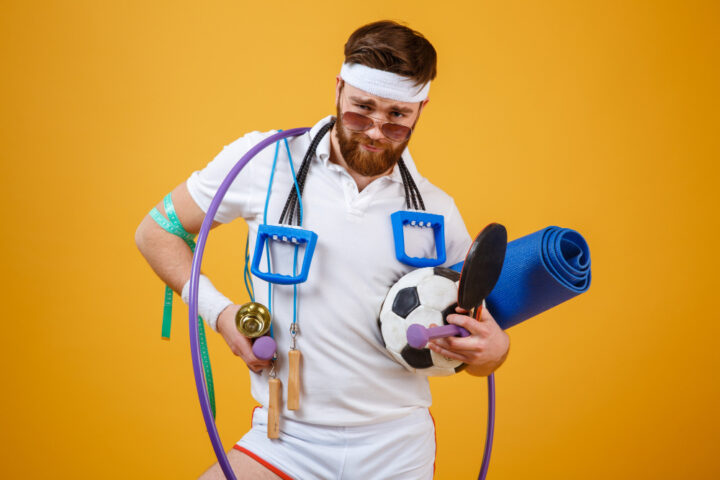The “holy week” is of special interest to outdoor pilgrims like me not only because of an important Christian tradition it celebrates, but also because of the long vacation time it offers. It give us trekking saints longer time to troop to our mecca hit those peaks again! I am one of those outdoor buffs who spent the last two successive Lenten season on top of those mountain ranges.
Ironically, no matter how low profile I keep on what my real job is, I often get questions related to it and mountaineering, a hobby I soon enjoyed.
“How do you physically prepare for this climb Dokie? Is there a way for us to prevent injuries and muscle soreness during and after climbs? Why do some people pass out of exhaustion or get headaches at high altitudes?”
These are the common questions fired at me, by my climbing buddies and often by newfound trekking friends.
Sometimes, I wish I have a tape player with me, so I could replay my answers to these questions. Because of these recurring questions, I have been inkling to write about the medical aspects of mountaineering. Specifically, I would like to start off with physical fitness and conditioning based on what I know and experienced, both as an orthopedic surgeon and an aspiring mountaineer.
A word of caution though. As much as I want to claim bragging rights of being a mountaineer, I am still a novice in this sport. That I am an expert sport physician and wilderness doctor is also too capricious a title. But I have developed a fitness program for myself, trekked a few mountains (read my other blog, Talakudong Mountaineer), endured some accidents and injuries from climbing but was able to go back to work as an orthopedic surgeon again. That in itself perhaps led me to study and learn more from my experiences and share it with anyone willing to learn and try it themselves.
Physical fitness and conditioning for mountaineering is a complex topic to discuss, often involving the ideas of a multi specialty training team but basically anchored on sound scientific, medical principles that is fine tuned by personal experiences. My fitness regimen was a product of reading, experiences of me and others I know, of trial and errors, of accidents and injuries I got whenever I hit the peaks or outdoors. I realized though that such experience and knowhow is of no use if not shared or taught to newbies willing to learn, and to experienced climbers avoiding accidents to happen while at their beloved sport.
Before we go further, I highly recommend that any serious climber should seek advise from their physicians before embarking on this task or scaling any mountains. In developing a fitness training program for your mountaineering expeditions, I also suggest the guidance of a certified fitness instructor. I understand that these two person may not be available in certain areas for certain people either for monetary reasons or lack of specifically trained personnel. But these are essential persons if you want to have a fun and less strenuous, less accident prone climbs. There’s no doubt about that. Ultimately, I (and this blog) hold no responsibility for whatever will happen to you, on training and on your climbs, whether you’ll follow my advise or not. That is entirely a personal
risk you have to take.
Personally, I always make it a point to know my current fitness status and goals before I embark on a training program or climb. There are numerous factors that can affect the fitness capacity of any person scaling a mountain, be it the weather, difficult trails, steep inclines and the altitude itself to name a few. To be able to face these unforeseen factors squarely and hurdle them, you have to be fit enough to adapt and survive. Aside from your basic mountaineering skills and survival tactics, this is where a fitness program and physical conditioning is all too important and beneficial.
A good fitness program for mountaineers consist of two major groups of exercises, the cardiovascular (aerobic) and motor (anaerobic) fitness exercises. Cardiovascular fitness is measured by your aerobic capacity to take in and use oxygen. In most instances, this is a function of pumping blood (and oxygen) into the muscle system with the help of lungs. A motor fitness program consists of exercises to enhance strength, endurance, power, balance, agility and flexibility. With better cardiovascular capacity and good motor fitness, the third component of fitness training for climbing, which is acclimatization, will be a little less painstaking.
For purposes of discussion, I’d be using the goals I set for climbing Mt. Apo (which I climbed on a Maundy Thursday last year) and the fitness program I tried to implement. Mt. Apo is the Philippines’ highest peak (2,954 MASL) and also have one of the coldest open air temperature nigh time. Considered as a Level 3 (strenuous, major) climb, the “trip” to the peak consist 3-5 days of passing through wet, tropical rain forest, with some objective hazards, rope maneuvering, and walking for at least 6-8 hours a day on mostly steep slopes of up to 80 degrees. Mt. Apo is a popular destination for newbies and experienced climbers alike not only because of the bragging rights conquering the highest peak but also of the beauty that lies within that solemn mountain.
Here are my specific goals I set before I embarked climbing Mt. Apo last year:
- To be able to carry a 40 litre backpack (NF Flight Series) , for 6-8 hours a day, for 4-5 days.
- To be able to recover from climbing exhaustion for 8-12 hours sleep on a cold (0-5 degrees) night.
- To be able to ascent to the peak on summit assault day on usually 60-80 degrees slope and back.
The first few weeks is centered on getting myself into the routine of exercises, emphasizing discipline but at the same time, carefully observing myself for overenthusiasm injuries. Using a timed fitness program, I vary and progress my exercises depending on my month to month progress. It is usually a regimented but often flexible program that suits my work days and schedules.
There are many cardiovascular exercise you can do that may be available to you in your location. I chose exercises I can do easily in my place, like running, stairs climbing, biking or swimming. These exercises not only increases cardiovascular capacity, it also increases strength and endurance for climbing. Here are other benefits of cardiovascular exercise.
Some general guidelines for aerobic training:
- Aerobic training should be monitored by your heart rate or pulse rate, which should be 65%-80% of maximum heart rate. Maximum heart rate is computed by subtracting your age from 220. This should be your training heart rate.
- Training each day should be at least 30 minutes to one hour to be effective. A longer period of training time each day, on special locations and equipments is needed if your going for lengthier climbs.
- The frequency of training should be regimented but flexible. I train 2-3 times per week and daily near the climb date and watch myself for over use injuries. Rest is very much recommended between training weeks.
 When I developed discipline for training routines, I advance my cardiovascular training using interval training. Interval training includes upsurges in exercise intensity during an elevated heart rate and is very strenuous. Interval training when used over long period of times, increases the capacity of heart to pump blood even on emergencies and unexpected hazardous treks. Here are my examples.
When I developed discipline for training routines, I advance my cardiovascular training using interval training. Interval training includes upsurges in exercise intensity during an elevated heart rate and is very strenuous. Interval training when used over long period of times, increases the capacity of heart to pump blood even on emergencies and unexpected hazardous treks. Here are my examples.- On running, I start with a thirty minute moderate intensity pace then increase this pace 3 times for ten minutes then go back to moderate intensity. I repeat this every 20 minutes.
- Track or oval running includes running one round on moderate pace then sprinting 100 yards then one round again on moderate intensity.
 I use stretching, weights and calisthenics to develop my motor fitness. I have yet to develop an effective program with weights as I have at the moment very limited access to a fitness instructor, but I’m working on light weights (15kg) of 2 sets consisting of 20 reps each. Then I rest for 60 sec between sets. Stretching, calisthenics, abdominal and back strengthening exercises can be done daily.
I use stretching, weights and calisthenics to develop my motor fitness. I have yet to develop an effective program with weights as I have at the moment very limited access to a fitness instructor, but I’m working on light weights (15kg) of 2 sets consisting of 20 reps each. Then I rest for 60 sec between sets. Stretching, calisthenics, abdominal and back strengthening exercises can be done daily.
I also concentrate training on my lower extremity (thigh and leg muscles) and my upper torso, usually the back and stomach as this will help me carry my backpack. Strength motor training of upper and lower body should be done twice a week
Warming up and cooling down is an important part of my fitness program. I warm up 10 minutes before any exercise, with jogging or skipping ropes and bring my heart rate to my training range.
I do static stretching for 10-15 minutes before and after my fitness program workout. Stretching reduces muscular tension and prevents soreness after workouts and climbs. Any static stretching exercise should be held for 30 seconds.
Weight training should be focused on correct form and technique to develop the essential large muscles first, like the shoulder, triceps, biceps, quads and calf muscles. Leg curls, calf raises and squats strengthen the lower body and extremities while some exercises should be aimed in developing the chest, shoulders of the torso. For abdominal exercise, cross training the abdomen is beneficial. I highly suggest you seek advise from your fitness instructor regarding these strength training exercises and the correct techniques needed to do it.
I do one leg stand for my static balance exercise. This consist of standing on one leg holding the other leg’s foot then squatting and then returning to the standing one leg position. I do this two sets with 12 reps each.
I benefit much from badminton for my dynamic balance exercise, since I do this as a sport also. Aside from dynamic balance, I also gained some sort of cardiovascular strength from badminton, although this is just on the subjective point of view.
For most of my training regimens and physical conditioning, I try to keep a training record of my fitness program, more for discipline and assessing my improvements. I am certainly motivated and getting enthusiastic every time I see an improvement in my fitness status.


















